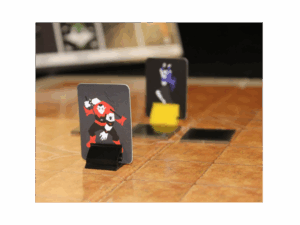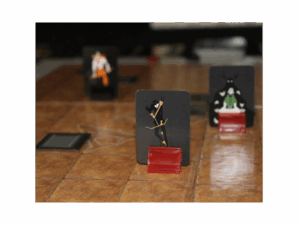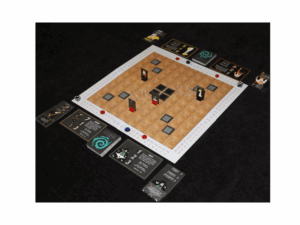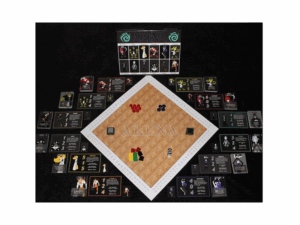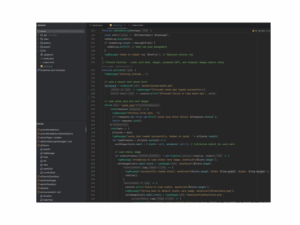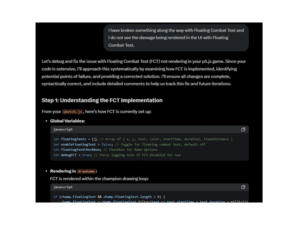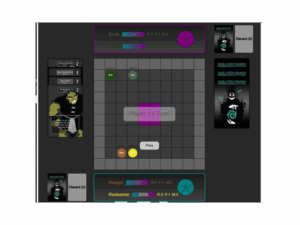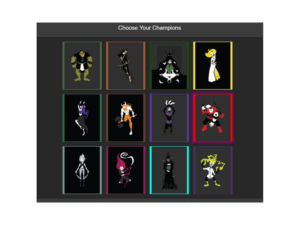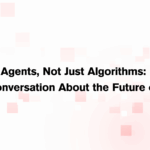
“Vibe coding” sounds like a term my middle schooler would use in a conversation, leaving me baffled and searching for it on Urban Dictionary at the same time. But behind the quirky (and totally real name) is a true shift in how we can build software.
Vibe coding is precisely what its name suggests. It’s a new way to code, but instead of starting a build with syntax and system design, your coding begins with, well, vibes.
The phrase was first coined by Andrej Karpathy, former Tesla AI lead and founding member of OpenAI, who described it like this:
There’s a new kind of coding I call ‘vibe coding,’ where you fully give in to the vibes, embrace exponentials, and forget that the code even exists. … I just see stuff, say stuff, run stuff, and copy‑paste stuff, and it mostly works.”
And that’s the heart of it.
When vibe coding, you can forget the architecture diagrams, the carefully scaffolded plans. Just describe what you want to build, pour your vibes and creativity into a prompt, and let AI meet you there, line by line.
It’s fast, flexible, and surprisingly effective.
But the real magic of vibe coding? You don’t need to know how to code to make it work, and naturally, we wanted to put that to the test.
The Rōnin Vibe Coding Challenge
At a company full of technologists who live for the latest and greatest, we couldn’t just talk about vibe coding; we had to test it.
So, our leadership team threw down the gauntlet: Can someone without a developer title or any coding experience build something using vibe coding?
Enter Chuck Harris.
As a partner at Rōnin with the title of Business Architect, Chuck doesn’t spend his days writing code. But if there’s one thing you should know about Chuck, it’s this: he doesn’t back down from a challenge. Not only did he accept the vibe coding gauntlet, but he was also determined to prove that with the right vibes (and a little help from AI), anyone can build a proof-of-concept (POC).
Getting Started with Vibe Coding
Chuck didn’t just want to build anything; he wanted to make something personal. Something he already knew like the back of his hand. So, he dusted off an old passion project that had been sitting on the shelf since 2016: Arena.
“Instead of diving into complex software applications,” says Chuck, “I wanted to tackle something fun and challenging that I knew inside and out— Arena. It was the perfect choice for judging the process and the outcomes.”
Arena is a card-based battle game he’d dreamed up with fellow Rōnin, Derek Adams. The game was born from a mashup of World of Warcraft, chess, and a dash of Smash Up. It was designed to be strategic, dynamic, and just crazy fun.
“In the early days of Rōnin, we used to have what we called arts and crafts time, and that’s where we created Arena. It was Derek and I working late into the night. I’ve got a great picture from about 10 years ago—cutouts, pieces, cards, mechanics—all laid out on a board.”
Since Arenas’ creation in 2016, it has lived for years as a paper prototype, tucked away. But with the rise of LLMs and vibe coding, Chuck saw his chance to take it a step further. As he put it, “we always had a bigger vision for Arena. We’ve often wondered if we could also take it to the digital market. We had never gotten around to it, but testing this game with vibe coding? It was the perfect opportunity.”
Paper Copy of Arena – circa 2016
From Prompt to Prototype: Chuck’s AI-Powered Dev Process
Armed with nothing but Grok 3.5, basic JavaScript knowledge, and a deep understanding of his game’s rule set, Chuck got to work.
“It was my opportunity to try to turn Arena into a piece of software, and I was on fire! I spent so many restless nights. I’d write a prompt, get JavaScript back, run it in an IDE, see what broke, highlight the bugs, and then talk to the AI again. I felt like collaborating with a junior dev team.”
Actual vibe coding prompts
Chuck’s results? He wrote over 4,000 lines of AI-assisted JavaScript code and had a functional prototype of the game. What began as a challenge from the leadership team turned into a crash course in the power and limits of vibe coding, and Chuck certainly learned a lot:
Insight #1: Analysts Can Build More Than Ever
Chuck’s background is in analysis, not software engineering. But vibe coding gave him enough leverage to express ideas, test them in code, and move fast without needing to open a ticket or tap a dev.
“After this project, I realized vibe coding puts real power in the hands of analysts,” Chuck said. “You can spin something up quickly, test your ideas, and hand off a working prototype for developers to refine and productionize.”
For many analysts, translating client feedback into technical requirements can feel like a game of telephone. However, with vibe coding, they can avoid ambiguity and build something visual that helps clarify exactly what’s needed, all while doing it quickly.
Insight #2: There Are Real Limits to Vibe Coding
It was clear that once the app reached a certain level of complexity (thousands of lines with extensive logic), things got messy.
“Unfortunately, the AI couldn’t keep track of everything,” says Chuck. “The text windows hit their ceiling, the architecture became shaky, and I mean, I pushed it as far as I could. But at one point, it was clear: this game needed to be re-architected by someone with experience.”
That’s the reality of vibe coding. It’s a powerful tool for prototyping, exploring ideas, and accelerating the early stages of development, but it’s not a technology easy button. It doesn’t replace deep architectural thinking or the expertise of experienced engineers. Once a project grows past a certain threshold, factors such as maintainability, scalability, and a clean structure become increasingly important.
Insight #3: Vibe Coding Is Just the Beginning
Chuck didn’t just come out of this challenge with a prototype, he came out with a new perspective.
“I learned so much more than I expected,” he said. “And I still feel like I’ve barely scratched the surface.”
While vibe coding gave Chuck the power to build something real, it also revealed the rapid evolution of this space. The deeper he got into the build, the more he realized that LLMs are evolving with constant capabilities new limits and behaviors that seem to emerge overnight.
“Every time I thought I had it figured out, something would change,” he said. “The models are getting smarter so quickly, it’s hard to just know everything right now. It’s not static. It’s a moving target.”
Chuck’s takeaway? Vibe coding is a powerful on-ramp, but to continue building, you’ll need to stay curious and humble.
Actual images from vibe coded game
The Vibe Coding Verdict
So, is vibe coding the future of software development, and will it replace all software development jobs?
Yes—and no.
At Rōnin, we would never use vibe coding to ship production-ready apps, and we wouldn’t recommend it for anything that is business-critical. If anything, this experiment taught Chuck that vibe coding can only get you close to the finish line, but not all the way across.
“Could I vibe code your entire platform? Probably not,” Chuck said. “But can I get a concept in front of you in a few days instead of a month? Absolutely.”
While vibe coding won’t replace experienced developers, it is an incredible rapid prototyping tool. Vibe coding can help you quickly spin up a POC application that enables clients to see their ideas in action, often within days instead of weeks.
Why This Matters
Vibe coding isn’t about skipping steps in the process; it’s about speeding up the early ones. It helps turn fuzzy ideas into functional mockups. It’s useful for:
- Non-devs who need to validate concepts
- Devs who want to fast-track early builds
- Teams are trying to get buy-in on a feature or MVP
- Analysts who want to bring clarity to client needs through something visual and interactive.
However, vibe coding can’t stand alone. It still needs a handoff and oversight. It requires Real architecture, testing, and deployment practices.
“These days, selling snake oil has never been easier,” Chuck warned, reflecting on the hype surrounding vibe coding. “But if you understand its limits and treat vibe coding as a bridge—not the final destination—it becomes a potent tool.”
This Is Just the Beginning
Karpathy wasn’t wrong.
The vibes are real, and Chuck proved that he brought Arcade from the shelf to the computer.
And here at Rōnin, we’re not just watching this shift of vibe coding, we’re part of it. We’re testing new technology and proving how tools like this can empower our team and our clients to think bigger, faster.
If you’re an analyst, marketer, founder, or product person, perhaps it’s time to try Vibe coding for yourself. I might change how you build forever.
And working on Arena? This is just the beginning.
Grok 4 dropped two weeks ago—and it’s impressive. Chuck already has plans to pick up where he left off, so stay tuned for a part two.
Because the vibes? They’re only getting stronger!
To be continued…
